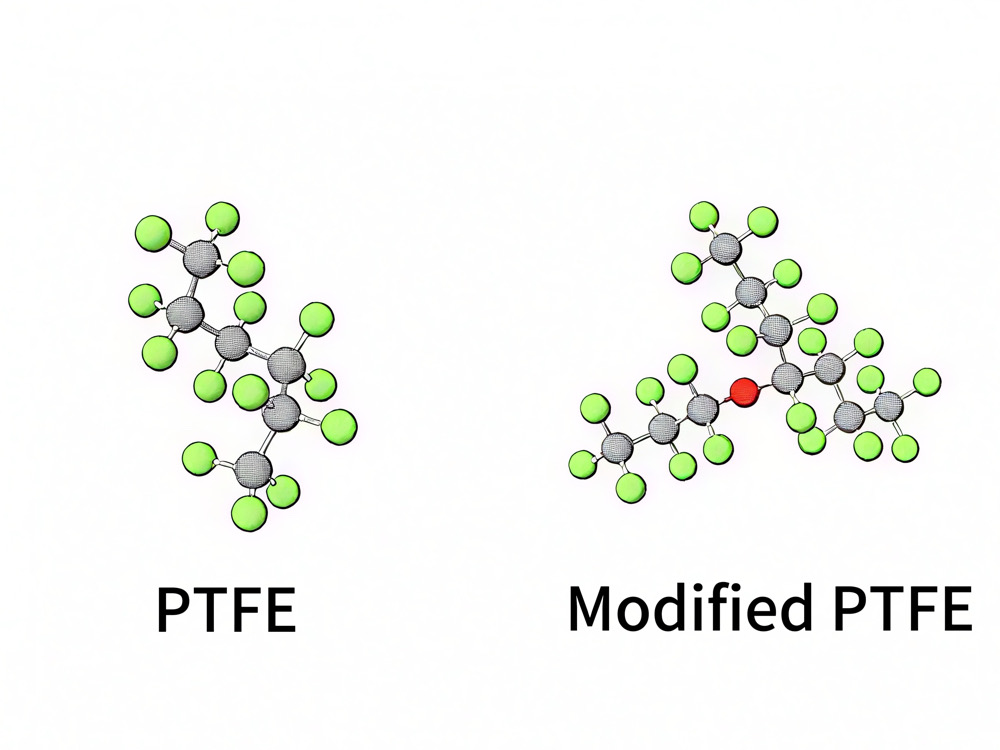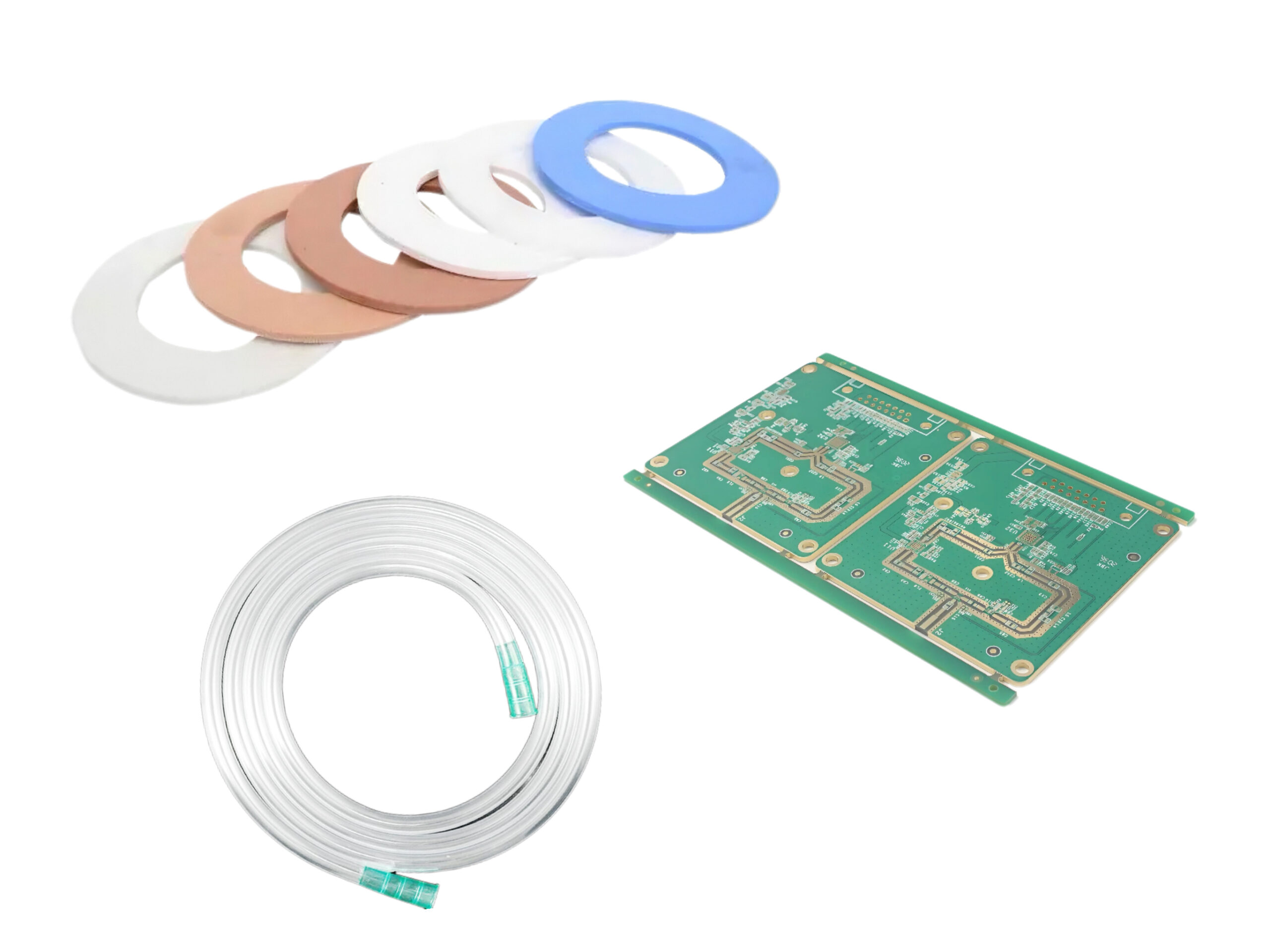Definition
Modified PTFE(also called Modified Teflon) is made by processing pure PTFE (Polytetrafluoroethylene) through special methods. It keeps the original advantages of PTFE while improving specific properties for better performance in certain uses.
Modification Methods
Filler Modification
This method mixes PTFE with different fillers to improve certain properties. Fillers can be used alone or combined, depending on the performance needed. Here are some common fillers and their functions:
Inorganic Fillers
Glass Fiber: Improves wear resistance, creep resistance, and stiffness
Carbon Fiber: Increases strength, heat transfer, and wear resistance
Graphite: Boosts wear resistance and lubrication
Molybdenum Disulfide: Enhances lubrication
Metal Fillers
Copper Powder: Improves heat transfer and wear resistance
Nickel Powder: Increases corrosion resistance and strength
Polymer Fillers
Polyimide: Improves creep resistance and high-temp stability
Polystyrene (PEEK, etc.): Increases wear resistance and stiffness

Chemical Treatment
This method changes the molecular structure of PTFE through chemical reactions. The most common is grafting modification, where monomers like styrene are grafted onto PTFE using gamma rays or electron beams. This boosts surface activity and bonding ability.

Surface Modification
Plasma Treatment: Uses plasma to add active groups to the surface. This improves wetting and bonding.
Laser Etching: Uses ultra-fast lasers to create tiny grooves. Often used for biosensors.
Background
PTFE is known for its excellent resistance to chemicals, low friction, and high temperature tolerance. But it also has weaknesses, like low strength and poor creep resistance. Modified PTFE solves these issues through targeted improvements.
Properties
Performance Comparison
| Property | Pure PTFE | Modified PTFE |
| Density | 2.1–2.3 g/cm³ | 2.5–3.0 g/cm³ |
| Tensile Strength | 15–30 MPa | 20–50 MPa |
| Elongation at Break | 200%–500% | 5%–300% |
| Hardness (Shore D) | 50–65 | 60–85 |
| Dielectric Strength | 15–25 kV/mm | 5–20 kV/mm |
Chemical Properties
| Property | Pure PTFE | Modified PTFE |
| Creep Resistance | 50%–100% | 5%–30% |
| Permeability | 1×10⁻¹⁰ cm³·cm/(cm²·s·Pa) | 1×10⁻⁴ cm³·cm/(cm²·s·Pa |
| Thermal Stability | -200°C to 260°C | -200°C to 200°C |
Choosing the Right Modification
Sealing Materials: Use 25% glass fiber + 5% graphite. Reduces friction by 40%. Ideal for high-pressure valves.
Medical Catheters: Plasma-grafted with acrylic acid. Increases surface hydrophilicity, reduces protein sticking by 60%.
High-Frequency Circuit Boards: Modified with nano-Aluminum Oxide. Keeps dielectric constant stable at 2.1–2.3 (at 1 MHz), suitable for 5G.

Price
Prices vary widely depending on the type and application. Generally, it ranges from 99 to 280 RMB per kilogram.



